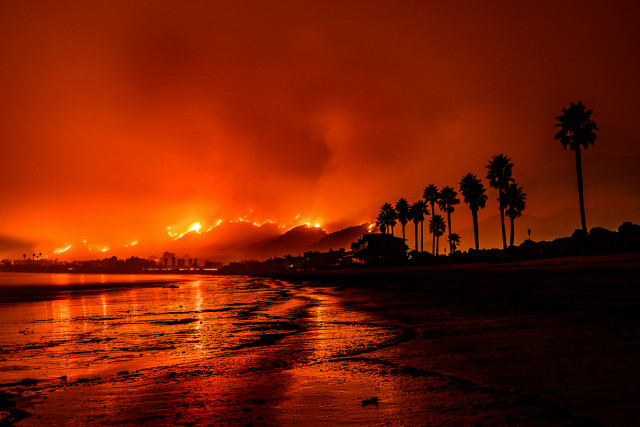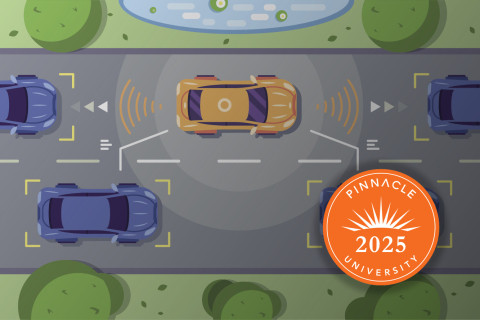
California Homeowners Insurance - Availability and Affordability as Wildfires Burn
As of November 2020, there were 9,279 wildfires in California. These incidents were responsible for 4.2 million acres burned, 31 fatalities and over 10,000 structures damaged or destroyed.1 According to Cal Fire, significant fire potential remained above normal across Southern California through December.2 Even before the devastating year, the California Department of Insurance (CDI) was researching the availability and affordability of wildfire coverage. One step in increasing availability was ordering the California FAIR Plan to provide a comprehensive policy in addition to its fire-only coverage by June 1, 2020.3
Another action taken by the CDI is mandatory one-year moratoriums on insurance companies non-renewing or cancelling residential property insurance policies. This action provides temporary relief to residents living within or adjacent to a declared wildfire disaster. The moratoriums were issued in December 2019 and November 2020.4
The CDI held a virtual investigatory hearing regarding homeowners availability and affordability on October 19, 2020. More than 500 people attended the October 19 hearing where the CDI provided data regarding the increase in non-renewals and FAIR Plan policies. The CDI also discussed Cal Fire recommendations to reduce the risk of wildfire damage and expressed concern that insurance companies were not recognizing the mitigation efforts in underwriting and pricing.5
The National Associate of Mutual Insurance Companies (NAMIC), in conjunction with other trade organizations, provided written comments to the CDI for consideration.6 The written comments responded to CDI’s questions:
- Why are insurers declaring their own rates to be “inadequate” and refusing to renew many homes in the wildland-urban interface, while at the same time these same insurers seek rate increases that are lower than California’s law permits?
- Why are insurance companies reluctant to take homeowner wildfire mitigation efforts into account when pricing residential property insurance?
- How will climate change, including extreme heat events, continue to affect future homeowners’ insurance rates, availability of insurance, and the financial health of our insurance market?
- How, if at all, would the use of catastrophe modeling in ratemaking help to make homeowners’ insurance more affordable and more widely available to homeowners?
- What other rules should the commissioner adopt to obligate insurers to spread risk and sell more policies to those homeowners in the wildland-urban interface who seek to purchase and maintain homeowners’ insurance?
The Insurance Institute for Business & Home Safety (IBHS) is at the forefront of building safety research and community resiliency reflecting the property insurance industry’s investment in mitigating catastrophe (cat) risks. This research has produced observations and conclusions that illustrate the need for additional data about the efficacy of mitigation efforts for them to be actuarially reliable. A concern of the industry is that mitigation efforts would need to be evaluated regularly. Defensible space must be maintained and may change between when a policy is issued and an event.7
Another concern of the industry is pricing the cat risk. The CDI requires a catastrophe load method that is based on long-term averages but wildfires are getting increasingly more destructive which is not reflected in the historical data. Allowing companies to utilize wildfire catastrophe models which combine historical data with scientific knowledge of the hazards would be the best way to adjust for wildfire risk.8 Other states allow catastrophe models to be used in rate filings. Hurricane models can be used in Florida rate filings after being certified by the Florida Commission on Hurricane Loss Projection Methodology (FCHLPM). The FCHLPM evaluates hurricane models to determine if the model meets general, meteorological, vulnerability, actuarial, statistic and computer standards. Catastrophe models reflect the changing hazards and conditions to allow insurers to better underwrite and price their business.
The CDI held a second virtual meeting on December 10, 2020, regarding potential administrative and regulatory changes to incentivize home-hardening and discuss models that are based in fire science to protect lives and property.9 Public comments on the topics discussed at the meeting are due in mid-January 2021. But another fierce wildfire season underscores that whatever the steps the CDI takes, stakeholders will need to work together to protect California homeowners while not causing insurers to leave the market or risk insolvency.
- https://www.fire.ca.gov/incidents/ Incidents Overview
- https://www.fire.ca.gov/incidents/ 2020 Fire Season Outlook
- California Department of Insurance press release dated November 14, 2019
- California Department of Insurance press release dated November 5, 2020
- California Department of Insurance press release dated October 20, 2020
- California: NAMIC, Trades Submit Testimony to CDI for Informational Hearing on Affordability, Availability of Homeowners’ Insurance in WUI, NAMIC Website, October 20, 2020
- Insurance Industry Response to CDI Investigatory Hearing on Homeowners’ Insurance Availability and Affordability, October 19, 2020, page 4
- Insurance Industry Response to CDI Investigatory Hearing on Homeowners’ Insurance Availability and Affordability, October 19, 2020, pages 12-13
- California Department of Insurance press release dated November 5, 2020



